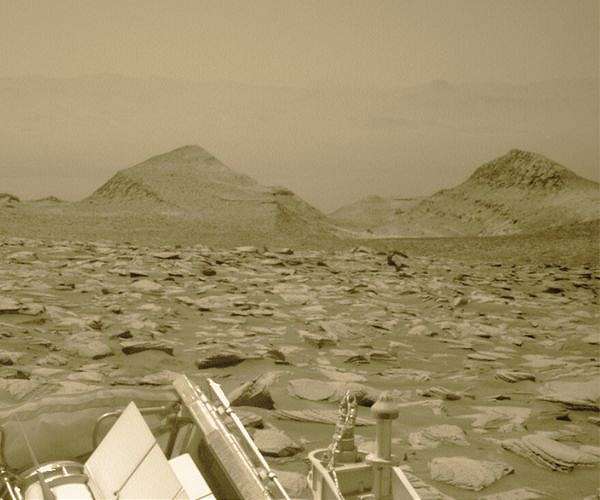Lunar railway initiative aims to streamline moonbase logistics
by Clarence Oxford
Los Angeles CA (SPX) May 02, 2024
NASA is advancing plans for the first lunar railway system, described as a critical component for the daily operations of a sustainable lunar base envisioned for the 2030s. This initiative is part of NASA’s broader Moon to Mars plan, which includes mission concepts like the Robotic Lunar Surface Operations 2 (RLSO2).
“We want to build the first lunar railway system, which will provide reliable, autonomous, and efficient payload transport on the Moon,” outlines the vision for FLOAT – Flexible Levitation on a Track. This innovative transport solution employs unpowered magnetic robots that levitate over a three-layer flexible film track. The layers consist of a graphite section for passive diamagnetic levitation, a flex-circuit for electromagnetic propulsion, and an optional thin-film solar panel for power generation when exposed to sunlight. This levitation method significantly reduces wear from lunar dust, providing a notable advantage over traditional wheeled or tracked robots.
FLOAT tracks are designed to be directly unrolled onto the lunar surface, offering a rapid deployment method that circumvents the extensive construction required for traditional transport infrastructures. Capable of handling payloads over 30 kg/m^2 and achieving speeds above 0.5 meters per second, the system is engineered to transport large quantities of regolith or equipment daily, enhancing the logistical capabilities of the lunar base.
The ongoing Phase 2 of the project will concentrate on minimizing risks associated with the long-term operation and scalability of FLOAT. Activities include the design and testing of robot and track prototypes at various scales and culminating in a lunar-analog testbed demonstration, focusing on site preparation and track deployment techniques.
These tests will also examine the potential impacts of lunar environmental factors, such as temperature fluctuations and regolith contamination, on the technology’s performance and longevity. The project aims to advance the manufacturing processes for essential components like large-area magnetic arrays and flex-circuit boards, paving the way for more robust and efficient lunar transport solutions.
This initiative not only supports lunar exploration objectives but also sets the stage for future robotic applications in other extraterrestrial environments.
Related Links
Moon to Mars Architecture
Mars News and Information at MarsDaily.com
Lunar Dreams and more



